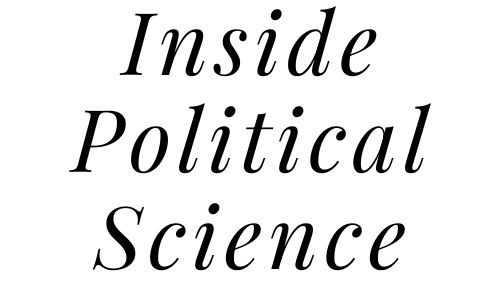
Political advertisements have long played a crucial role in shaping U.S. elections. Over the years, some ads have stood out not just for their creativity but for their ability to sway public opinion and alter the course of history.
From catchy jingles to powerful emotional appeals, these ads have captured the essence of political campaigns, resonating with voters and leaving a lasting impact. This article explores some of the most effective political ads in U.S. history, examining the context, content, and influence each ad had on its respective election.
Most Effective Political Ads in US History
Political ads have evolved dramatically over the years, with some standing out for their memorable messages and lasting impact. Below are nine of the most effective political ads in U.S. history, showcasing how each ad influenced its respective election.
#1. “I Like Ike” (1952) – Dwight D. Eisenhower
Context: In the 1952 election, Dwight D. Eisenhower, a World War II hero, faced Illinois Governor Adlai Stevenson. Eisenhower was running as a candidate with military experience, but he needed to appeal to a broad cross-section of Americans beyond just his military background.
Content: The “I Like Ike” ad featured a catchy jingle and simple visuals of everyday Americans expressing their support for Eisenhower. The ad highlighted his relatability and national popularity, making him seem like a leader who could connect with ordinary citizens.
Impact: The ad became an instant hit and helped Eisenhower win the 1952 election in a landslide. Its simplicity and repetition made it one of the most memorable political ads in history, demonstrating the power of a catchy slogan and emotional appeal.
#2. “Daisy” (1964) – Lyndon B. Johnson
Context: During the 1964 election, President Lyndon B. Johnson ran against Senator Barry Goldwater. Goldwater’s views on nuclear weapons, especially his belief in using them in limited situations, became a major point of contention.
Content: The “Daisy” ad was highly controversial, showing a young girl counting flower petals before an ominous countdown and a nuclear explosion. The ad symbolized the dangers of electing Goldwater, emphasizing the potential for nuclear war if he became president.
Impact: The ad was aired only once, but it had a profound impact. It played on voters’ fears of nuclear war and portrayed Goldwater as too extreme. Johnson won in a landslide, and the ad remains one of the most powerful emotional appeals in political advertising history.
#3. “Laughter” (1968) – Hubert H. Humphrey
Context: Hubert Humphrey faced Richard Nixon in the 1968 presidential election. The country was in turmoil, with civil rights protests, urban riots, and the ongoing Vietnam War dominating the political landscape.
Content: The “Laughter” ad featured Humphrey in a light-hearted, optimistic setting, laughing with people and showing positive images of unity. It aimed to contrast Humphrey’s hopeful vision with the divisiveness and unrest of the time.
Impact: While the ad did not secure Humphrey’s victory, it was a bold attempt to shift the narrative away from the negativity surrounding the election. It showed his optimism and message of healing, though it ultimately wasn’t enough to overcome Nixon’s appeal.
#4. “McGovern Defense” (1972) – Richard Nixon
Context: In the 1972 election, incumbent President Richard Nixon faced Democrat George McGovern. McGovern’s policies, particularly his stance on defense, were seen as weak by many Americans, especially during the Cold War.
Content: The “McGovern Defense” ad highlighted McGovern’s opposition to defense spending and portrayed him as being soft on national security. It emphasized the potential risks of electing a president who didn’t prioritize defense during a time of global tension.
Impact: The ad successfully capitalized on public fears about national security, contributing to Nixon’s overwhelming victory. It was a critical piece of Nixon’s strategy to present McGovern as unfit to lead during the Cold War era.
#5. “Morning in America” (1984) – Ronald Reagan
Context: During his re-election bid in 1984, Ronald Reagan faced off against Walter Mondale. By this time, the country had recovered from the 1980 recession, and Reagan’s economic policies were credited with sparking a period of growth.
Content: The “Morning in America” ad was a positive, uplifting message showcasing a strong, prosperous, and hopeful America. It portrayed everyday Americans enjoying a thriving economy and a peaceful nation. The ad emphasized Reagan’s leadership and the recovery under his presidency.
Impact: The ad resonated with voters and helped secure Reagan’s massive victory in the 1984 election. It’s often cited as one of the most effective positive ads, portraying a nation in renewal and positioning Reagan as a leader who had brought hope and progress.
#6. “Willie Horton” (1988) – George H.W. Bush
Context: In the 1988 election, George H.W. Bush faced off against Michael Dukakis, the governor of Massachusetts. During Dukakis’s tenure, a controversial prison furlough program had allowed convicted murderer Willie Horton to escape and commit further crimes.
Content: The “Willie Horton” ad highlighted the release of Horton, focusing on his violent crimes after being granted a weekend furlough. The ad sought to link Dukakis to Horton’s crimes, framing him as soft on crime and thus unsuitable for leadership.
Impact: The ad was widely criticized for its racial undertones, but it was effective in appealing to voters’ fears about crime. It helped Bush solidify his position on law and order, contributing to his eventual win in the 1988 election.
#7. “Man From Hope” (1992) – Bill Clinton
Context: Bill Clinton ran for president in 1992 against incumbent George H.W. Bush during a time of economic recession and dissatisfaction with the status quo. Clinton needed to connect with voters who were frustrated with the economy.
Content: The “Man From Hope” ad focused on Clinton’s humble beginnings in Hope, Arkansas, and his rise to political prominence. The ad aimed to humanize Clinton and present him as an outsider who understood the struggles of ordinary Americans.
Impact: The ad was successful in crafting Clinton’s image as a relatable and empathetic leader. It resonated with voters who were tired of Washington insiders, helping Clinton to secure a victory in the 1992 election.
#8. “Yes We Can” (2008) – Barack Obama
Context: Barack Obama’s 2008 presidential campaign was marked by a message of hope and change, as the U.S. faced the aftermath of the 2007-2008 financial crisis and ongoing wars in Iraq and Afghanistan.
Content: The “Yes We Can” ad featured diverse Americans from all walks of life chanting the slogan, emphasizing unity, optimism, and the possibility of change. It captured Obama’s message of hope and inspired millions of voters to believe in the power of collective action.
Impact: The ad became a rallying cry for Obama’s supporters, playing a key role in his successful bid for the presidency. It demonstrated the power of grassroots mobilization and emotional appeal in modern political campaigns.
#9. “Windsurfing” (2004) – George W. Bush
Context: In the 2004 presidential election, George W. Bush faced Democrat John Kerry. Kerry’s wealth and image as an elitist were key attack points for the Bush campaign, particularly with Kerry’s image as a Massachusetts liberal.
Content: The “Windsurfing” ad showed Kerry windsurfing, accompanied by commentary suggesting that he was out of touch with the average American. It used Kerry’s recreational activity as a symbol of elitism, contrasting it with the more relatable image of George W. Bush.
Impact: The ad was controversial but effective in framing Kerry as an out-of-touch liberal. It capitalized on perceptions of Kerry’s wealth and helped Bush secure his re-election in a close race.
These ads highlight how political campaigns have utilized messaging to target emotions, fears, and hopes to influence voters. Each ad played a pivotal role in its election, demonstrating the power of well-crafted political advertisements in shaping the outcomes of U.S. presidential races.
Conclusion
Political ads have proven to be powerful tools in shaping the outcome of U.S. elections. From the simplicity of Eisenhower’s “I Like Ike” to the emotional charge of Johnson’s “Daisy,” these ads reflect the ever-changing landscape of American politics. They demonstrate how candidates use media to communicate their values, stoke fears, and inspire hope, often tapping into the sentiments of voters at pivotal moments in history.
While some ads have been praised for their creativity and positive messages, others have sparked controversy and debate, yet all have left an indelible mark on the political process. As media continues to evolve, it’s likely that the role of political ads will remain a central element in how candidates connect with voters and influence public opinion.
